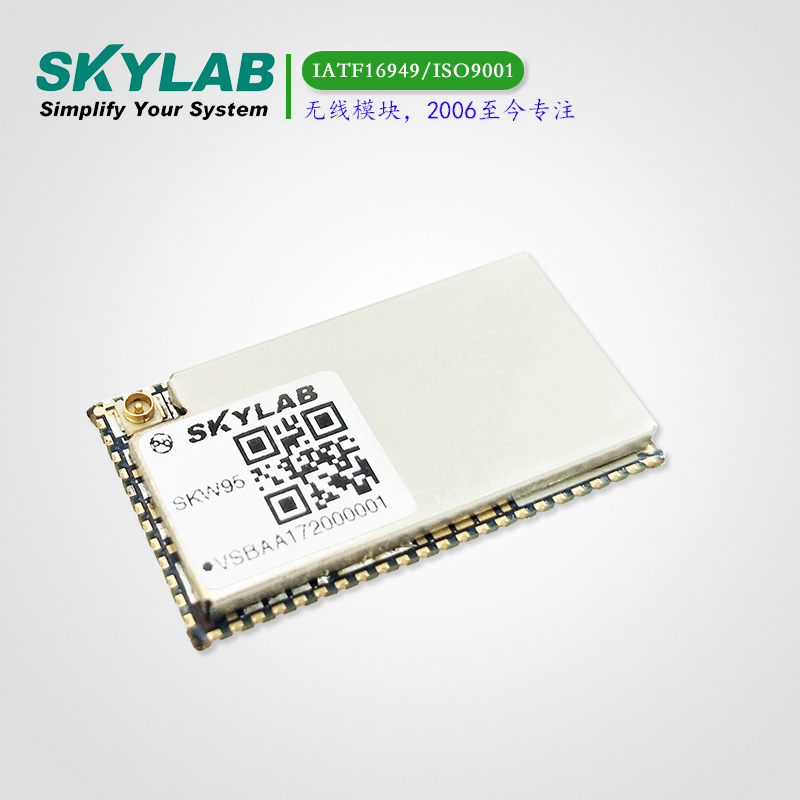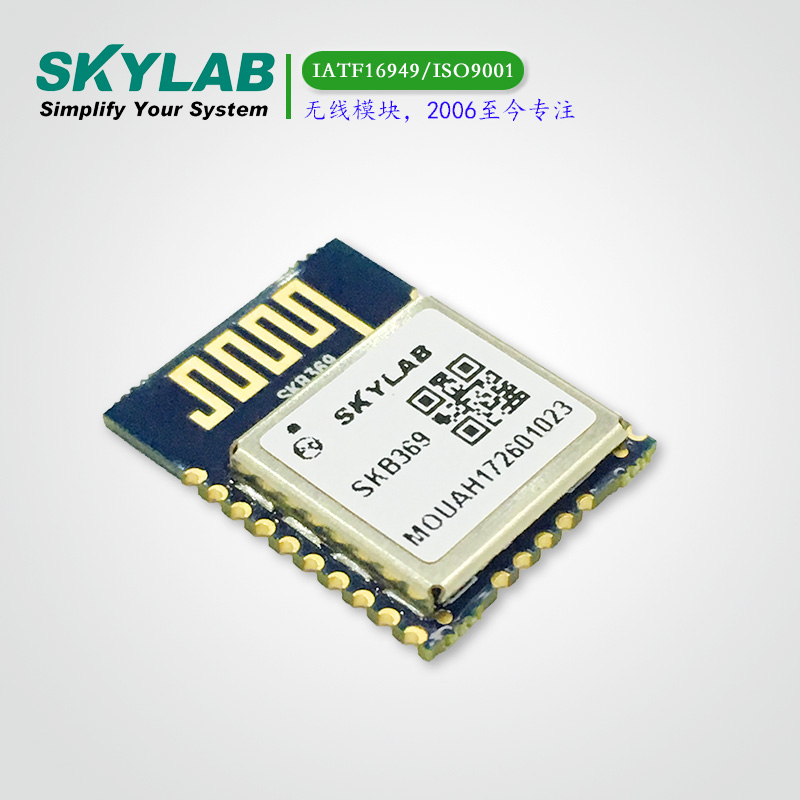Making Wireless IoT Project Easy, Smart, Secure.
GET A FREE SAMPLEIn today's era of rapid technological development, smart homes are gradually becoming an indispensable part of people's lives. In smart home systems, WiFi modules and Bluetooth modules play a crucial role, bringing people a convenient, comfortable, and intelligent living experience.
1、 Application contribution of WiFi module
The WiFi module, taking SKW95 as an example, has demonstrated powerful functionality in smart homes.

Through the WiFi module, users can remotely control their smart devices at home from anywhere with a network connection, using devices such as smartphones and tablets. Whether on the way to work or traveling, it is easy to turn on or off lights, adjust air conditioning temperature, and control curtain opening and closing. At the same time, it can also monitor the security status of the home in real time, such as viewing the situation at home through smart cameras, to ensure the safety of the home.
For example, in the hot summer, users can remotely turn on the air conditioning through their mobile phones before going home, allowing the home to cool down in advance and enjoy a comfortable environment as soon as they return home.
The WiFi module can connect different smart devices together, achieving interconnectivity between devices. For example, connecting devices such as smart speakers, smart TVs, and smart lighting fixtures to the same WiFi network and achieving unified control through voice commands or mobile applications.
For example, users can control various devices in their home through voice commands on smart speakers. Simply say the command, and the smart speaker will transmit the command to the corresponding device through the WiFi module, achieving convenient operation.
The WiFi module has a high data transmission speed, which can meet the transmission needs of a large amount of data in smart homes. For example, high-definition videos captured by smart cameras and operational data of smart appliances can be quickly transmitted to the cloud for analysis through WiFi modules.
By analyzing this data, smart home systems can understand users' usage habits and needs, thereby providing more personalized services. For example, automatically adjusting the brightness and temperature of lights based on the user's daily routine can improve the comfort of life.
2、 Application contribution of Bluetooth module
Bluetooth modules represented by SKB369 also have unique advantages in smart homes.

The Bluetooth module has the characteristic of low power consumption, which is particularly suitable for some battery powered smart devices. For example, smart door locks, smart sensors, and other devices can be connected to mobile phones or other devices through Bluetooth modules to achieve low-power operation and extend battery life.
The smart door lock uses a Bluetooth module to connect to a mobile phone, and users can unlock it through Bluetooth on their phone without carrying a key, which is convenient and fast. At the same time, due to the low-power characteristics of the Bluetooth module, the battery of the door lock can be used for a long time, reducing the trouble of replacing the battery.
The Bluetooth module is suitable for close range device control and interaction. In a home environment, users can quickly connect and control smart devices through Bluetooth on their mobile phones. For example, using Bluetooth on a mobile phone to connect to a smart speaker and play music; Connect smart wristbands to view exercise data, etc.
When users exercise at home, the smart bracelet transmits real-time exercise data to their mobile phone through a Bluetooth module, allowing them to check their exercise status and adjust their exercise plan at any time.
Multiple Bluetooth devices can form a small network to achieve collaborative work. For example, by distributing multiple Bluetooth sensors in different rooms and communicating with each other through Bluetooth modules, environmental monitoring of the entire house can be achieved.
In smart homes, temperature sensors, humidity sensors, air quality sensors, etc. are connected together through Bluetooth modules to form an environmental monitoring network. These sensors can monitor real-time environmental parameters in the home and transmit data to an intelligent control center, enabling automatic adjustment of devices such as air conditioners and humidifiers to maintain a comfortable indoor environment.
3、 The collaborative effect of WiFi module and Bluetooth module
In smart homes, WiFi modules and Bluetooth modules are not independent of each other, but can work together to provide more comprehensive functions for the smart home system.
The remote control and big data transmission capabilities of WiFi modules combined with the low power consumption and close range control advantages of Bluetooth modules can meet the needs of different scenarios. For example, in remote control scenarios, using WiFi modules to achieve remote operations; In close range interaction scenarios, use Bluetooth modules to achieve fast connection and control.
When users are at home, they can use Bluetooth modules to control some nearby devices, such as smart speakers, smart bracelets, etc; When users go out, they can use WiFi modules to remotely control devices at home, achieving a comprehensive smart home experience.
Through the collaborative effect of WiFi module and Bluetooth module, linkage between different devices can be achieved. For example, when a user unlocks a smart door lock through Bluetooth on their phone, the WiFi module can simultaneously trigger the smart lighting system, automatically turning on the living room lights and creating a warm atmosphere for the user to go home.
Or when the smart sensor detects that the indoor temperature is too high, the information is transmitted to the smart air conditioner through the Bluetooth module. At the same time, the smart air conditioner is connected to the cloud through the WiFi module to obtain the current weather information and user habits, automatically adjust the temperature and wind speed, and achieve intelligent environmental regulation.
WiFi modules and Bluetooth modules play an important role in smart homes, bringing people a convenient, comfortable, and intelligent living experience. With the continuous advancement of technology, it is believed that the functions and performance of these two modules will continue to improve, making greater contributions to the development of smart homes.
Copyrights© Shenzhen Skylab Co.,LTD All Rights Reserved.

